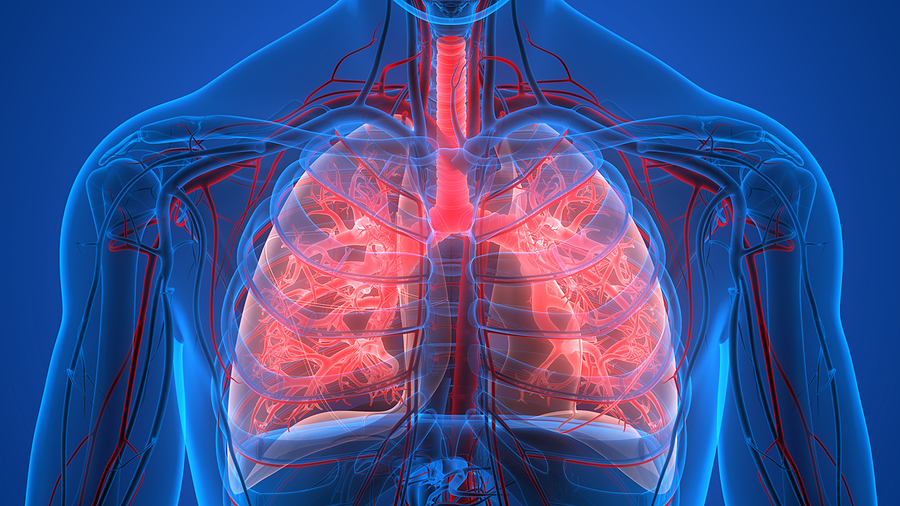9/11 Respiratory Diseases Due to Toxic Dust and Fumes

If you were at Ground Zero or in lower Manhattan on September 11, 2001, worked at the site or downtown Manhattan in the weeks following, or lived or attended school in the affected area and have suffered a respiratory condition as a result of your exposure to toxic dust and fumes in the air around Ground Zero following the attacks, the 9/11 Victim Compensation Fund and the World Trade Center Health Program can provide you tax-free compensation for your injuries and free medical care for the rest of your life. Read on for more information.
Toxic Ground Zero Dust and Fumes
Nearly 20 years after the terrorist attack on the World Trade Center in New York, a study has revealed that the individuals who were at Ground Zero on September 11, 2001, or assisted in recovery and cleanup shortly after are still being newly diagnosed with cancer and other medical conditions as a result of their exposure to the harmful dust and chemicals in the debris. The risk of developing any type of cancer is 9 percent higher for Ground Zero workers than it is for the general population.
According to information from the American Lung Association, the lungs of the firefighters who were among the first responders to the World Trade Center aged 10 to 12 years in the first weeks or months following the exposure to the Ground Zero dust. Those who were smokers fared even worse.
In addition, anyone present in Lower Manhattan south of Canal Street/East Broadway/Clinton Street in the months following the attacks is also at a higher risk of illnesses, respiratory conditions, and cancers due to the toxic dust cloud and fumes for a period of nine months afterword. This includes children, students, employees and workers, and residents.
The Danger of the Dust and Fumes
The dust plume caused by the terrorist attack contained hundreds of harmful substances, including pulverized alkaline dust from the fragmented building materials and chemicals from the explosions and the burning building fragments. To further clarify this: the plume contained the toxins of 91,000 liters of jet fuel combined with 10,000,000 tons of building materials, with contents burning at temperatures of more than 1,000 degrees Celsius. The plume extended from lower Manhattan across the East River into Brooklyn.
Some of the other toxins contained in the cloud included:
- Dioxins from burning plastic
- Hundreds of tons of asbestos that was used as a flame retardant in the North Tower
- Heavy metals, including lead, that was used to make electric cables flexible
- Polychlorinated biphenyls (PCBs), which are used in electrical transformers
- Glass fibers that lodged in victims’ lungs
- Gypsum from drywall
Most people who had intense early exposure to the toxins at Ground Zero experienced at least a 10 percent decrease in lung function, and that reduction lasted for at least a decade. The issue impacted those who were smokers at the time of the exposure as well as those with pre-existing conditions, such as allergies or asthma, tended to fare worse than others. The American Lung Association notes that many of the respiratory impacts caused by the plume could have been reduced through the use of personal protective equipment, such as masks, to prevent or reduce inhalation of the harmful particulate matter.
Unfortunately, the responders who arrived at the scene had minimal equipment. The health conditions are also generally more prevalent in individuals who worked at the site for a length of time and thus experienced more exposure.
Around a half million people were exposed to the dust plume during the rescue, recovery, and cleanup of the site. Since that time, more than 2,500 first responders have died. More than 900 have died of lung and other cancers as a result of WTC dust exposure.
The people most at risk of developing a respiratory disorder as a result of exposure to Ground Zero dust include:
- First responders
- Search and rescue workers
- Cleanup workers
- Survivors and area residents
Respiratory Conditions Caused by WTC Dust
Around 70 percent of the workers involved in the rescue, recovery, and cleanup operations at Ground Zero have suffered respiratory conditions as a result of the dust plume. The toxic dust from the World Trade Center collapse has been associated with many conditions that are debilitating and even fatal. Here is a look at some of the conditions that first responders, survivors, and other exposed individuals have been diagnosed with in the nearly two decades since the attack.
Lung Cancer
When you inhale, the air enters your lungs through the trachea and divides into tubes known as bronchi. Most lung cancers start in the lining of the bronchi and are not discovered until they have spread to other parts of the body.
Some of the symptoms seen in later stages of the disease include:
- A cough that doesn’t go away or worsens
- Coughing up blood or rust-colored sputum
- Chest pain that worsens with deep breathing, coughing, or laughing
- Hoarseness
- Loss of appetite
- Unexplained weight loss
- Shortness of breath
- Feeling tired or weak
- Infections, such as bronchitis or pneumonia that won’t go away or keep recurring
- New onset of wheezing
Malignant Neoplasms of the Trachea
Tumors on the trachea, also known as the windpipe, are rare. More commonly, cancer affecting this area has metastasized from other areas, including the esophagus or lung. Often, these tumors are not diagnosed until they have reached later stages, when treatment will no longer help. In addition to the danger of the cancer spreading, this condition also results in a narrowing of the airway.
The symptoms of a malignant neoplasm of the trachea include:
- Wheezing, shortness of breath, and coughing with or without blood
- A gasping sound when breathing
- Frequent upper airway infections
- Difficulty swallowing and hoarseness
Mesothelioma
 Malignant mesothelioma is an aggressive and deadly form of cancer that appears in the mesothelium, which is a tissue that covers many of the body’s organs. 9/11 related Mesothelioma is caused by exposure to asbestos. At the World Trade Center site, asbestos levels were 112,000 times higher than the legal limit. The most common site for mesothelioma to develop is on the pleura inside the lungs, but it may also appear in the abdomen, heart, and testicles.
Malignant mesothelioma is an aggressive and deadly form of cancer that appears in the mesothelium, which is a tissue that covers many of the body’s organs. 9/11 related Mesothelioma is caused by exposure to asbestos. At the World Trade Center site, asbestos levels were 112,000 times higher than the legal limit. The most common site for mesothelioma to develop is on the pleura inside the lungs, but it may also appear in the abdomen, heart, and testicles.
The symptoms of pleural mesothelioma include:
- Chest pain
- Painful cough
- Shortness of breath
- Unusual lumps on the chest, beneath the skin
- Unexplained weight loss
Asthma
Asthma is a condition that causes the airway to narrow, swell, and produce extra mucus that makes breathing difficult and can trigger coughing, wheezing, and shortness of breath. Asthma attacks can even prove fatal.
The symptoms of asthma include:
- Shortness of breath
- Chest tightness or pain
- Wheezing when exhaling
- Trouble sleeping that is caused by coughing, wheezing, or difficulty breathing
- Coughing or wheezing attacks that worsen with respiratory illnesses, such as a cough or flu
Interstitial Lung Disease
Also known as pulmonary fibrosis, interstitial lung disease is a condition caused by scarring or inflammation of the interstitium, which is the tissue that surrounds the lung’s air sacs, blood vessels, and airways. This scarring causes lung tissue to stiffen, making breathing more difficult.
Symptoms of this condition are:
- A dry, non-productive cough
- Shortness of breath
- Decreased tolerance for exercise
- Fatigue
- Weight loss
Reactive Airways Dysfunction Syndrome (RADS)
Reactive airways dysfunction syndrome (RADS) is a poorly understood condition whose symptoms mimic asthma, but that is unresponsive to asthma treatments. The condition is caused by inhaling harmful gas, vapors, or fumes. Symptoms generally occur within 24 hours of the inhalation of harmful substances, first presenting as bronchitis. After six months, the condition is considered chronic.
Chronic Obstructive Pulmonary Disease (COPD)
9/11 related Chronic obstructive pulmonary disease (COPD) is an inflammatory lung disease that results in obstructed airflow from the lungs. It develops due to exposure to gases or particulate matter and results in an increased risk of heart disease, lung cancer, and other conditions. COPD symptoms often do not appear until after irreversible lung damage has already occurred.
Symptoms of COPD include:
- Shortness of breath, particularly during physical activity
- Wheezing
- Tightness in the chest
- A chronic cough that produces mucus that is yellow, white, or greenish
- Frequent respiratory infections
- Lack of energy
- Unintended weight loss
- Swelling in the ankles, feet, and legs
Chronic Cough Syndrome
Chronic cough syndrome is a cough lasting eight weeks or more. It often occurs with other symptoms, including:
- A runny or stuffy nose
- Postnasal drip, which feels like liquid running down the throat
- Frequent throat clearing or a sore throat
- Hoarseness
- Wheezing and shortness of breath
- Heartburn or a sour taste in the mouth
- Coughing up blood
Get Help Filing Your VCF Claim
The September 11th Victim Compensation Fund (VCF) is one of two programs that the federal government has created to assist those exposed to WTC dust who have been diagnosed with one of the covered conditions or to families who lost a loved one as a result of a covered condition caused by exposure to the toxins in the dust plume. All of the respiratory conditions listed above are eligible for compensation. Obtaining compensation through the fund is not just limited to first responders, but also to those who worked or volunteered for the construction, cleanup, and debris removal, as well as those who lived, worked, or attended school in the affected area.
The original VCF operated from 2001 to 2004. It was intended to provide compensation for anyone who suffered physical harm in the September 11 terrorist attacks, as well as the family members of those killed in the attacks.
In 2011, President Barack Obama reactivated the fund through the Zadroga Act (now called the “Never Forget the Heroes: James Zadroga, Ray Pfeifer, and Luis Alvarez Permanent Authorization of the September 11th Victim Compensation Fund Act”). Obama reauthorized the Zadroga Act in 2015, extending the fund for five more years, but with provisional changes that changed the amount of compensation victims could receive. By 2019, the fund had insufficient funds to pay out existing and future claims.
Later that year, the federal government permanently authorization for the Zadroga Act, with provisions to fully fund the program and to allow applicants to file a claim anytime until October 2090. Nobody needs to worry about taking money from first responders—the fund has enough money to pay for all 9/11-related claims.
To receive compensation from the VCF, individuals must complete the following three steps:
- Obtain certification of their conditions as covered conditions by the WTC Health Program
- Registering with the VCF by the applicable deadline. The deadline to register with the VCF differs from the filing deadline of October 2090, and varies according to your circumstances, including when you were certified as having a covered condition for the WTC Health Program.
- Filing your application before the October 2090 filing deadline.
Once you submit your claim, the VCF will ensure you included all the required documentation with the application.
Applicants must include:
- Claim form signature page
- The authorization for the release of your medical records
- Confirmation from the WTC Health Program that you have at least one WTC-associated physical condition that is certified for treatment
- Proof that you were present at Ground Zero during the acceptable dates of exposure
- The Social Security Administration consent form if you are filing for economic losses
- Authorization for the funds to be deposited into your bank account
- Letters of Administration and an original or certified death certificate for wrongful death compensation claims
If any of the necessary documentation is not submitted with the application, the VCF will place the claim on inactive status and send the applicant a letter informing of the missing information. If you don’t submit the missing information within 60 days of the date on the missing information letter, VCF may deny the claim.
Call us. We can help you find and submit all of this paperwork and file your claim properly.
The VCF approves claims on a first-in, first-out basis, and the process of approval can take time. We’ll do what we can to shepherd you through it as efficiently as possible.
Let Hansen & Rosasco Help
The impacts of the September 11, 2001, terrorist attacks are ongoing, including the damage that was done to the respiratory systems of those working and volunteering in the area. If you have suffered a respiratory illness as a result of your exposure to the WTC dust plume and fumes for the months up until May 30, 2002. Hansen & Rosasco can help you apply for compensation from the 9/11 Victim Compensation Fund. For more information, contact us at (855) 353-4907.


